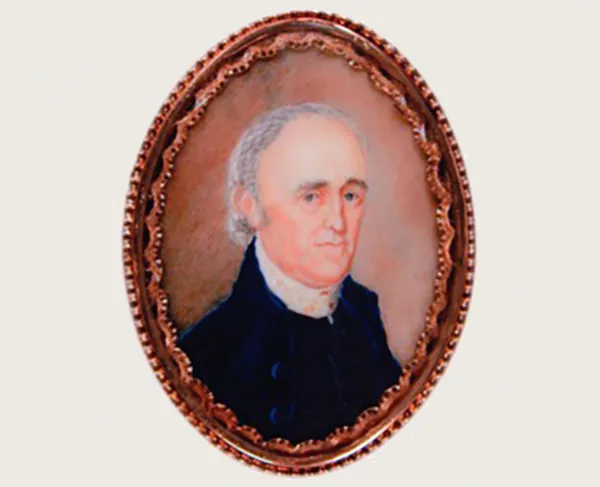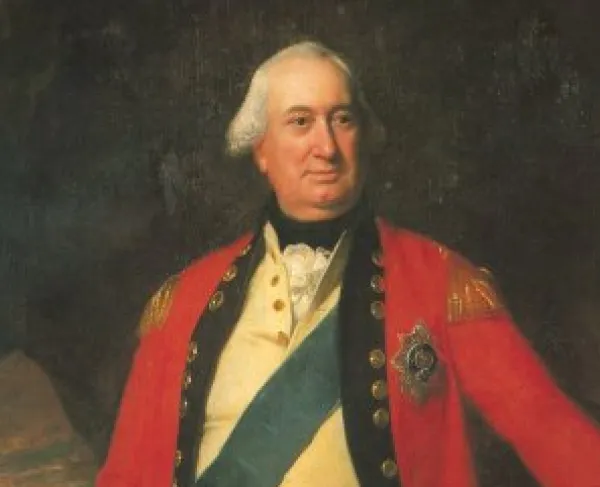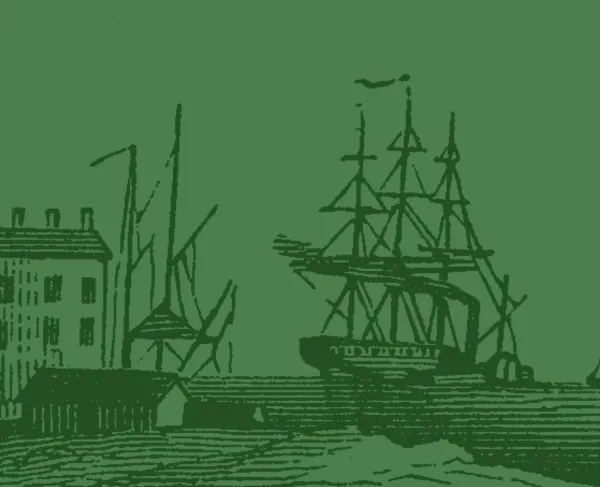
Breach Inlet
Sullivan's Island, South Carolina | Jun 28 - 29, 1776
The first British effort to capture Charleston, South Carolina in the summer of 1776 ends in failure.
As the British Navy besieged the fortifications on the southern tip of Sullivan’s Island with hope of destroying the American defenses and easing their way into Charleston Harbor to invade the city, a second offensive was materializing north of Sullivan’s Island on the beaches of Long Island (present-day Isle of Palms). The British under commander Sir Henry Clinton had begun unloading troops and supplies on Long Island on June 9 with the intent of establishing a temporary beachhead before attempting to cross Breach Inlet and land on the northern shore of Sullivan’s Island. From there, Clinton’s forces were to march south and envelope the unfinished Fort Sullivan’s western flanks. From intelligence he had been given by the British Navy, Clinton believed Breach Inlet to be only eighteen inches deep at low tide, suitable to cross his entire force on foot. The British commanded a force of about 3,000 strong onshore. Spying Clinton’s landing, the Americans quickly established makeshift fortifications on the northern tip of Sullivan’s Island opposing the inlet. Col. William “Danger” Thomson held the position with a mixture of South Carolina Rangers, mixed units of militia and about 100 mixed Native American warriors, totaling his forces to just under 800. What Thomson knew, and what Clinton most certainly did not, was that while Breach Inlet was about half a mile wide in total, the channel located immediately off the northern tip of Sullivan's Island was seven feet deep at low tide. Despite the various sandbars and shallow points, the narrow channel had a ripping current, making any attempt to wade across it impossible. However, the inlet's shallower parts would allow for skirmishers on both sides to get within musket range.
Thomson had his men, which included several enslaved people, dig the first of two fortifications on the beach overlooking the Inlet. This forward battery was protected by a swamp to its west and log abatis to its front. On June 16, a handful of British deserters informed Thomson of Clinton’s numbers and intentions. Coincidentally, this was the same day Clinton himself rowed out into the ocean to access his options; still assuming Breach Inlet was shallow enough to wade, he opted to remain on Long Island and attack Sullivan’s Island via this approach. Encamped some six miles from the inlet, Clinton began moving his forces, including Lord Charles Cornwallis, who commanded the 2nd Brigade, southward where they met the wider beaches, sand and oyster bars on the southern end facing the inlet. Clinton’s army was supported by two of His Majesty’s ships (HMS Ranger, HMS Lady William) just off the coastline, who attempted firing actions at the American defenses across the inlet. However, the larger boats could only pilot in the ocean and not the inlet nor the estuary creek between the island and the mainland. Lobbing shells near and about the patriot entrenchments was without effect in the sand. With the British now visible on the rival beach, skirmishes broke out with some claiming the lives of a few British soldiers. Twenty of the Royal Highland Emigrants failed to ambush Captain Samuel Boykin’s Catawba Indians moving single file on the beach at one point. Even at low tide, as handfuls of either forces were within 180 yards of each other on the sand bars, strong volleys stopped the sheepish advances. While this was occurring, Clinton became aware of a second battery arising within the American fortifications, this one about 500 yards in the rear of the one on the beach. It was here Thomson placed his 18-pounder, one of two cannon (the other being a 6-pounder) the Americans had. Sitting higher up on th bluff, it commanded the inlet. Clinton wrote, “It was apparent that the few men I had boats for, advanced singly through the narrow channel uncovered and unprotected, could not now attempt a landing without a manifest sacrifice.”
1,300
3,800
At 2:00pm on June 28, with the thundering of naval cannon bombarding Fort Sullivan, Clinton decided to make his move. Most of his forces were called to arms and to mount an amphibious crossing of the inlet by way of a 15-flatboat flotilla to storm the beachhead and take the fortifications. One flatboat could carry one company of men at a time, so only 700 total men could cross at any given time. The sloop HMS Ranger and the schooner HMS Lady William flanked the soldiers on the shore. The British 1st Brigade boarded the flatboats and waited to be launched. Meanwhile, the 33rd Regiment crossed over to Green Island between Long Island and the mainland to assemble on the battery they’d built out of oyster shells. The 2nd Brigade waited on the beach for their turn to launch upon the return of the flotilla. Clinton placed his artillery of two 6-pounder cannon and two howitzers on the crest of the beach, shelling the front American battery while British mortar fire lobbed into the far battery. With everything in place, Clinton now assumed the British navy would be sending ships to the rear of Fort Sullivan to assist in his plan of enveloping it. However, portions of Admiral Peter Parker’s fleet became grounded on the shoals in Charleston Harbor, preventing this from coming to pass. In the meantime, some five hundred South Carolinian and Virginian troops reinforced Thomson’s 3rd SC Regiment in the afternoon. Without ever leaving the beach, Clinton continued his artillery shelling of the American fortifications into the night and after Parker sailed out of the harbor in defeat.
What transpired the following morning remains up for debate depending on who’s account is read. The British remained under arms into the following morning with the soldiers stationed either in their assigned flatboats or ready to launch at a moment’s notice. At about 6:00am on June 29, the British attempted again to cross Breach Inlet by flatboat flotilla. Lt. Colonels John Bird’s 15th Regiment and Robert Prescott’s 28th Regiment boarded the flatbeds. “The boats had put from the shore and in ten minutes would have reached the other side, they returned, disembarked and marched on the strand in as solemn a silence as a funeral procession,” wrote Dr. Forster, an eyewitness behind the British lines. Clinton himself wrote that his forces never left the beachhead. Official British versions state that Clinton did not attempt a crossing that day. However, several other eyewitnesses, mainly from the American viewpoint, stated that Clinton’s forces were scattered and bombarded at point-blank range with both musket and cannon from Thomson’s fortifications. Richard Hutson, a delegate to the Continental Congress and eyewitness, wrote, “The land forces on Long Island, in the meantime, strained every nerve to affect a landing on the back, but the eighteen pounder with grape-shot spread havoc, devastation and death, and always made them retire faster than they advanced.” Another British account of this second attempt to cross reads, “It was the destructive fire from Col. Thomson's fort which prevented the flotilla from advancing and not the shoals and sand bars, as was alleged, it was the repulse of the flotilla which prevented General Clinton from fording the inlet, and not the depth of the water.”
However it went down the morning of June 29, 1776, General Clinton’s forces never made it across Breach Inlet. Soon, his forces were shuttled off Long Island to the remaining fleet under Admiral Parker where they set sail for waters far and away from Charleston. Sullivan’s Island had been defended, and the American victory at Fort Sullivan, while certainly the more famous of the two stands, cannot completely overshadow what William Thomson and his soldiers did facing off the enemy across a narrow slit of churning water.
5
151
Today, historical markers located on both the northern tip of Sullivan’s Island and on Charleston Boulevard on the southern tip of Isle of Palms indicate the fierce stand off between both American and British forces. Breach Inlet is much narrower today than it was in June 1776 as several maps indicate a wider inlet of shallow sandbars protecting a gulf channel of seven or eight feet, the very one that prevented General Clinton from simply wading his forces across to meet Thomson. Like the naval attack on Fort Sullivan, the resilience of the American defenders played a key role in repelling the British efforts of taking Sullivan’s Island’s northern beachhead. And more so, the British Navy’s faulty intelligence of the whereabouts of the many shoals and sandbars in the area prevented them from adjusting their battle plans in the moment. Having paid such a heavy price in 1776, Sir Henry Clinton would not make the same mistakes again when the British army decided to return to Charleston in the spring of 1780.
All battles of the Southern Theater 1775 - 1779 Campaign
Related Battles
1,300
3,800
5
151






